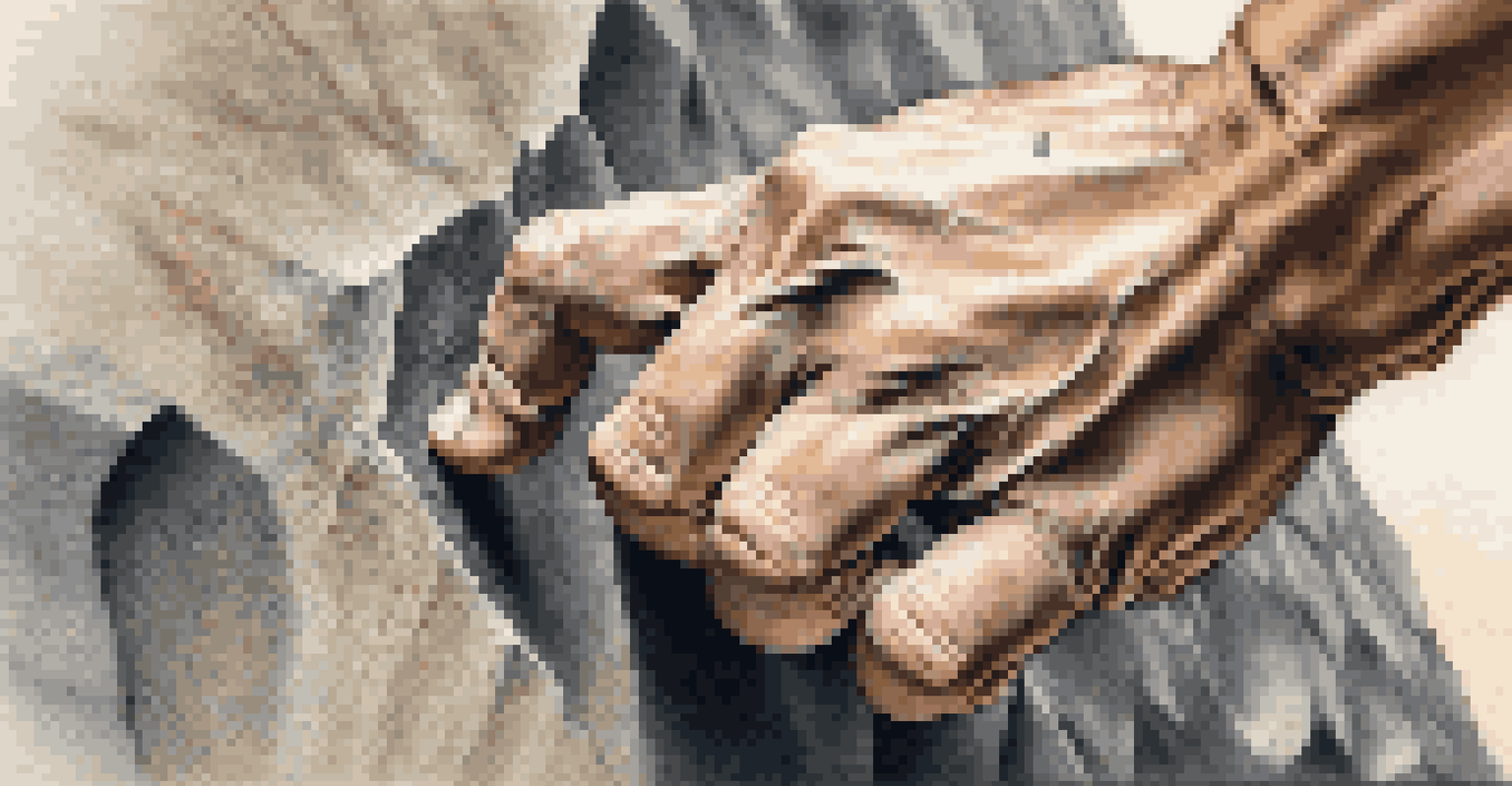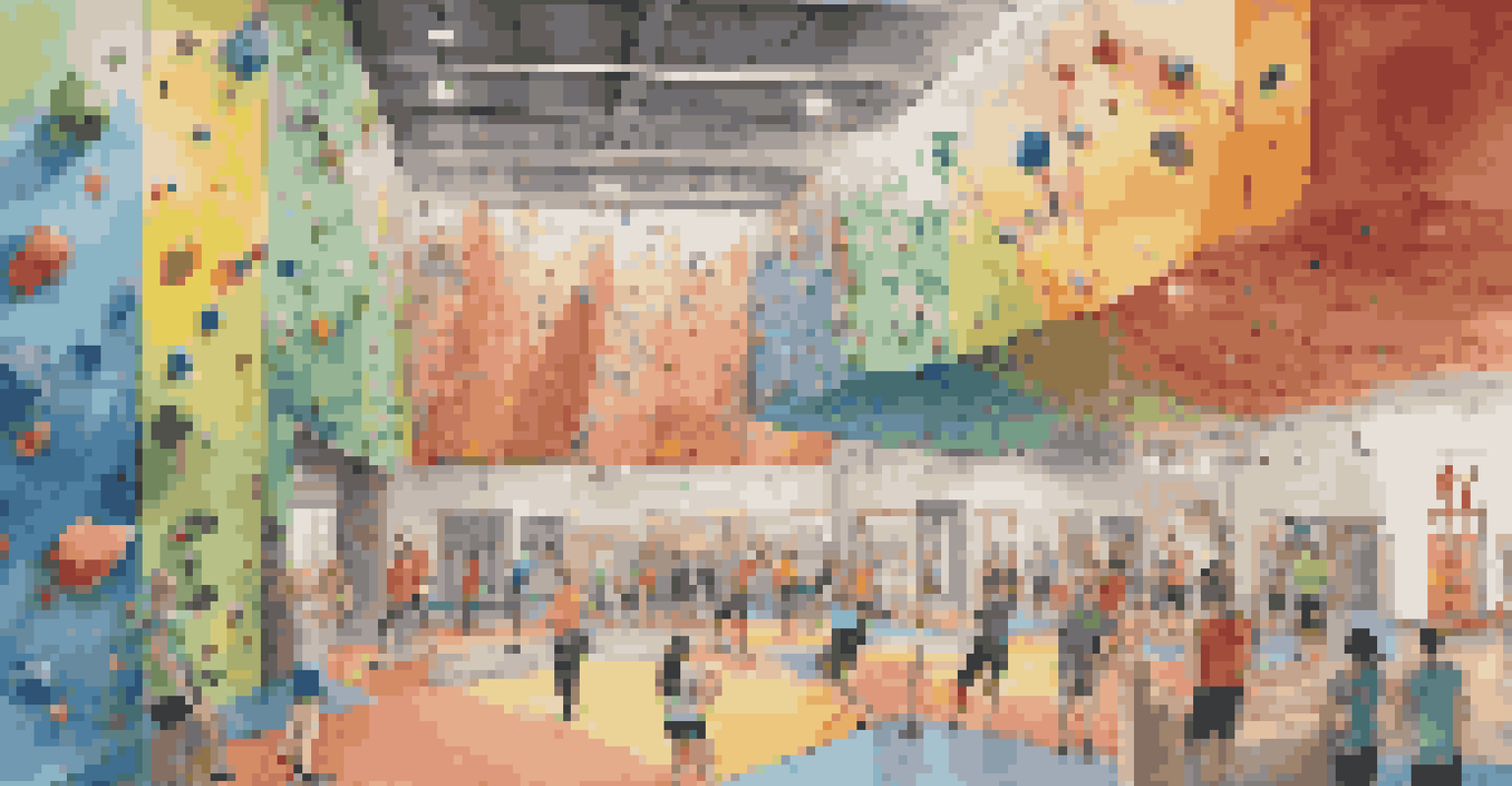Understanding Climbing Grades: Navigating Indoor Climbing Levels

What Are Climbing Grades and Why Do They Matter?
Climbing grades are a standardized way to rate the difficulty of climbing routes. They help climbers gauge their skills and choose challenges that suit their abilities. Without these grades, it would be tough to figure out which climbs match your experience level.
Climbing is not just about reaching the top; it’s about enjoying the journey along the way.
When you see a grade, think of it as a roadmap for your climbing journey. It tells you what to expect in terms of physical and mental challenges. Whether you’re a beginner or seasoned pro, understanding grades enhances your climbing experience.
Additionally, grades foster a sense of community among climbers. They allow for shared goals and discussions about techniques, which can be incredibly encouraging, especially for newcomers. So, knowing your grade can help connect you with others on similar climbing paths.
The Different Systems of Climbing Grades Explained
Climbing grades vary by region and climbing style, but the two most common systems are the French and V-scale. The French system is widely used for sport climbing and runs from 3 to 9, with plus signs indicating harder variations. Meanwhile, the V-scale is specifically for bouldering, starting at V0 and going upward.

Understanding these systems is crucial for navigating climbing gyms and outdoor routes. For example, a V2 in bouldering might feel different than a French 6a, but both convey a similar level of difficulty. Keeping this in mind helps climbers adjust their expectations depending on the grading system in use.
Understanding Climbing Grades
Climbing grades serve as a roadmap, helping climbers gauge their skills and choose suitable challenges.
It's also worth noting that some gyms might have their own grading systems, which can be a bit confusing at first. Don't hesitate to ask staff for clarification; they’re there to help you make sense of the routes. Just like learning a new language, getting familiar with these grades will come with practice.
How to Choose the Right Climbing Grade for You
Selecting the right climbing grade is crucial for an enjoyable experience. If you're just starting out, it’s wise to choose a grade that allows you to build confidence without feeling overwhelmed. Aim for routes that challenge you but are still within your reach.
The best climber in the world is the one who is having the most fun.
As you get more comfortable, gradually push yourself toward higher grades. This incremental approach not only builds strength but also enhances your skills. Remember, it’s not a race; everyone progresses at their own pace, and it's perfectly fine to climb within your comfort zone.
Moreover, don’t be afraid to revisit easier routes every now and then. They can be great for refining your techniques or simply enjoying a laid-back session. Climbing should be fun, and sometimes, a friendly V1 can provide just the right blend of challenge and enjoyment.
Understanding the Role of Technique in Climbing Grades
Technique plays a significant role in how you perceive a climbing grade. A climber with excellent footwork might find a technically challenging route easier than someone relying solely on strength. This highlights the importance of developing a well-rounded skill set.
In fact, many climbers find that focusing on their technique can lead to improvements in climbing grades over time. For example, mastering the art of foot placements and body positioning can make seemingly impossible routes suddenly achievable. It’s all about finding efficiency in your movements.
Technique Enhances Performance
Improving your climbing technique can make challenging routes feel more achievable, highlighting the importance of skill development.
Additionally, learning to read the route can make a big difference. Taking the time to assess holds and plan your moves before starting can save energy and help you climb more effectively. Think of it as preparing for a puzzle; the better you understand it, the easier it becomes to solve.
The Importance of Safety and Climbing Etiquette
Safety is paramount in climbing, and understanding grades helps ensure you choose appropriate challenges. Before starting a climb, always check your gear and make sure you’re familiar with the safety protocols at your gym. This not only protects you but also those climbing around you.
Moreover, climbing etiquette plays a key role in the gym community. Being respectful of others’ space, waiting your turn, and offering encouragement can enhance everyone’s experience. Remember, climbing isn’t just about individual skill; it’s a shared journey.
Finally, keep in mind that everyone was a beginner at some point. Offering support to newcomers not only fosters a welcoming environment but also builds camaraderie. After all, we all share the same passion for climbing, and a little kindness goes a long way.
How to Track Your Progress Through Climbing Grades
Tracking your progress in climbing can be both motivating and rewarding. Many climbers keep a journal or use apps to log their climbs, noting the grades and their feelings about each route. This practice not only helps with goal setting but also allows you to see how far you’ve come.
When you look back at your logs, it can be encouraging to see improvements over time. Maybe you started with V0s and now you’re tackling V3s. Each tick on your list is a reminder of your dedication and growth, serving as fuel for your climbing fire.
Community and Safety Matter
Embracing climbing etiquette and community support enhances the climbing experience while ensuring safety for all.
Additionally, sharing your progress with friends or within a climbing community can foster accountability. It’s amazing how a little friendly competition or encouragement can push you to try that next grade. Embrace the journey and celebrate every milestone along the way!
Embracing the Climbing Community and Culture
The climbing community is one of the most supportive and vibrant groups you’ll ever encounter. From sharing tips on tackling grades to celebrating each other's achievements, camaraderie is at the heart of climbing culture. Engaging with fellow climbers can enhance your experience and provide invaluable insights.
Consider participating in group climbs or events at your local gym; these settings foster connection and growth. Meeting others who share your passion can not only expand your skill set but also lead to lasting friendships. After all, climbing is about more than just individual achievements; it’s about the bonds you form along the way.

Lastly, don’t forget to give back to the community. Whether it’s mentoring a newbie or volunteering for climbing events, your involvement can make a difference. By nurturing the climbing culture, we ensure that it continues to thrive for generations to come.